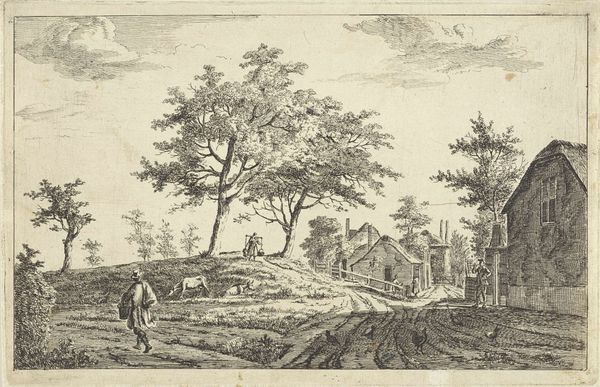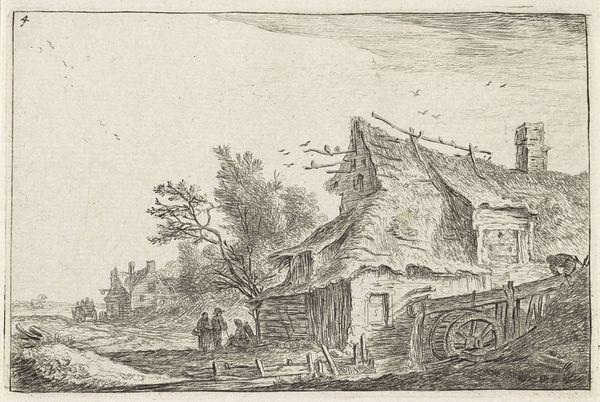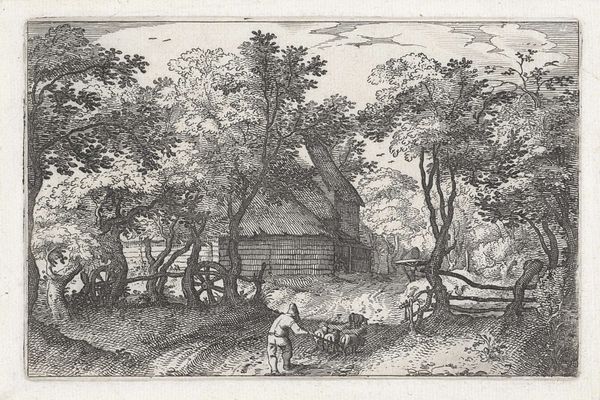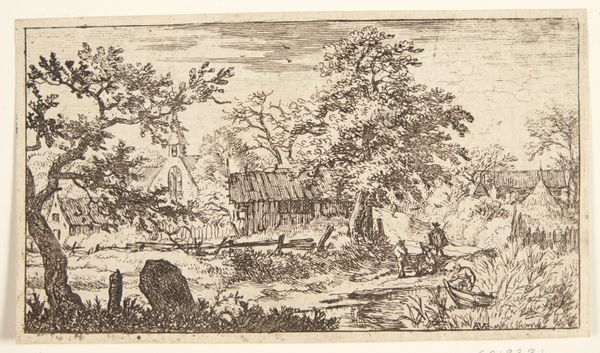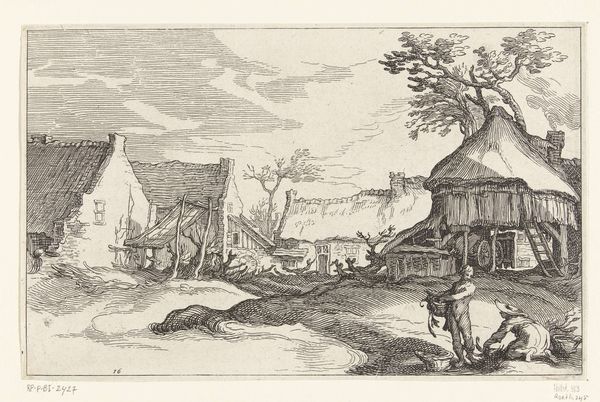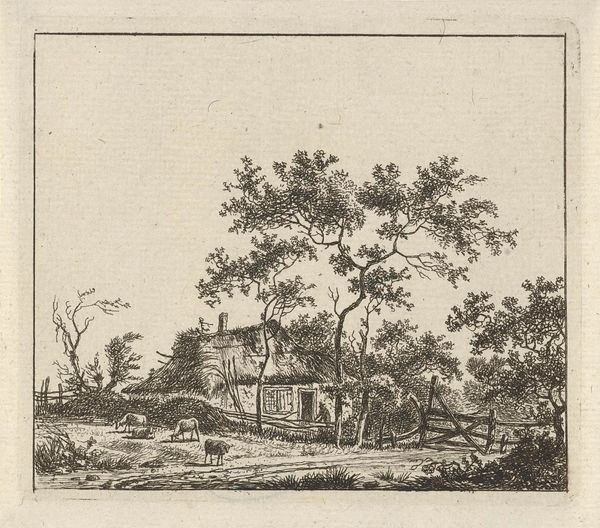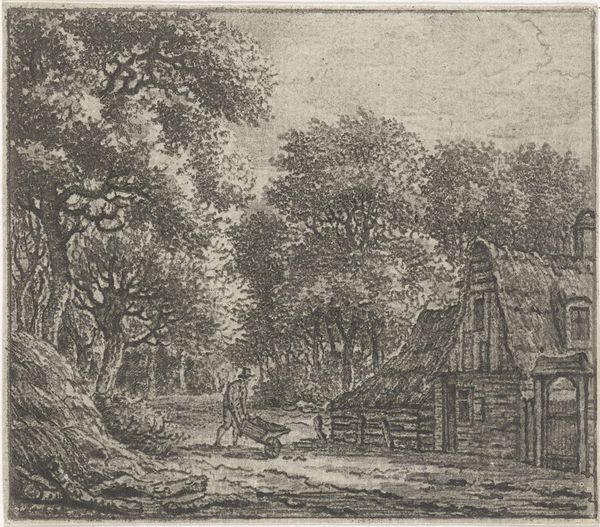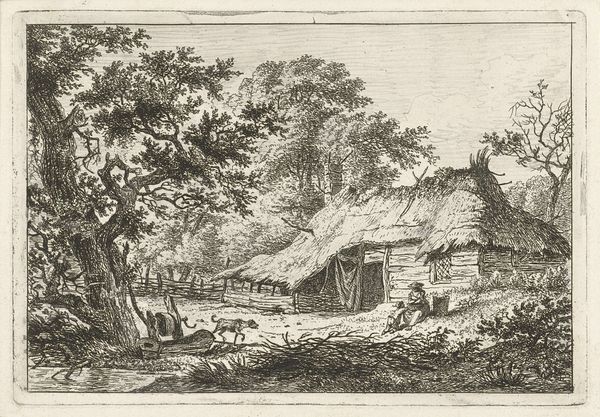
drawing, etching, ink
#
drawing
#
pen drawing
#
dutch-golden-age
#
etching
#
dog
#
landscape
#
ink
#
line
#
realism
Dimensions: height 68 mm, width 88 mm
Copyright: Rijks Museum: Open Domain
Editor: So, this is Jacob Cats' "Landscape with Seated Man and Dog," created in 1768 using etching. The overall mood feels very quiet and unassuming, almost mundane, you know? What do you see in this piece? Curator: I see a visual representation of power structures within the Dutch Golden Age. Consider the title: it centers the human figure. How does that emphasis, or hierarchy, influence our understanding of the landscape itself? Editor: Hierarchy? I hadn't really thought of it that way. It just looked like a simple pastoral scene. Curator: Precisely. That perceived simplicity is key. The art historical canon often silences the labor that enables these idyllic settings. Who is excluded from this picture? Whose labor sustains this seemingly empty space? Editor: Hmm. The etching doesn't depict any farming or anything like that, so... I guess we’re meant to assume that's happening elsewhere, off-screen? Curator: Exactly. The focus is diverted to the seated man and the dog, domestic elements that further naturalize power relations. How does situating the figure within this seemingly untouched space legitimize his claim to it? And further, whose story isn’t being told? Editor: So, by focusing on what *isn't* shown, we can get a deeper understanding of the historical context. It's a lot more than just a "Landscape with Seated Man and Dog," after all. I'll keep that in mind going forward. Curator: That is the crux of art historical analysis - that which is rendered invisible often reveals the most.
Comments
No comments
Be the first to comment and join the conversation on the ultimate creative platform.
